Contact: Daryl Kimball, Executive Director, (202) 463-8270 x107; Shannon Bugos, Senior Policy Analyst, (202) 463-8270 x113
The Treaty on the Non-Proliferation of Nuclear Weapons (NPT), which entered into force in March 1970, seeks to inhibit the spread of nuclear weapons. Its 190 states-parties are classified into two categories: nuclear-weapon states (NWS), consisting of the United States, Russia, China, France, and the United Kingdom, and non-nuclear-weapon states (NNWS). Under the treaty, all states-parties commit to pursue general and complete disarmament, and the NNWS agree to forgo developing or acquiring nuclear weapons. These are the first two “pillars” of the treaty. The third pillar ensures that states-parties can access and develop nuclear technology for peaceful applications.
With its near-universal membership, the NPT has the widest adherence to any arms control agreement, with only South Sudan, India, Israel, and Pakistan remaining outside the treaty. The treaty, which was indefinitely extended in 1995, calls for a review conference every five years to assess progress on achieving the treaty's key objectives and provide opportunities to discuss new measures to strengthen the treaty. For more information on the NPT, see The Nuclear Nonproliferation Treaty at a Glance.
The following timeline provides a brief history of events related to the nuclear Nonproliferation Treaty from the 1950s to the present.
Skip to: 1950s, 1960s, 1970s, 1980s, 1990s, 2000s, 2010s, 2020s
1950s
 July 29, 1957: The International Atomic Energy Agency (IAEA) comes into existence with the mission of promoting and overseeing the peaceful use of nuclear technology. U.S. President Dwight Eisenhower had called for the creation of such an agency in his December 1953 “Atoms for Peace” proposal.
July 29, 1957: The International Atomic Energy Agency (IAEA) comes into existence with the mission of promoting and overseeing the peaceful use of nuclear technology. U.S. President Dwight Eisenhower had called for the creation of such an agency in his December 1953 “Atoms for Peace” proposal.
October 17, 1958: Ireland proposes the first resolution at the United Nations to prohibit the “further dissemination of nuclear weapons.”
1960s
December 4, 1961: The UN General Assembly unanimously approves Resolution 1665, which is based on the earlier Irish draft resolution and calls for negotiations to prevent the spread of nuclear weapons to additional states. The resolution says that countries already having nuclear weapons would “undertake to refrain from relinquishing control” of them to others and would refrain “from transmitting information for their manufacture to States not possessing” them. Countries without nuclear weapons would agree not to receive or manufacture them. These ideas formed the basis of the NPT.
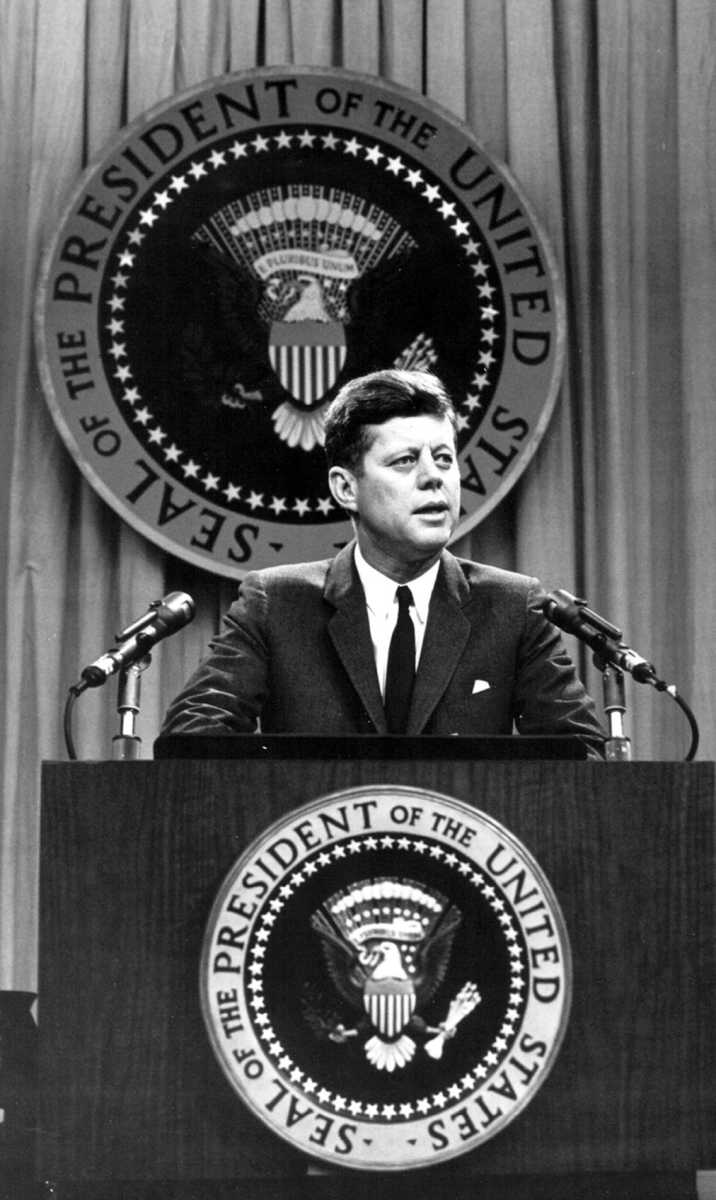 March 21, 1963: In a press conference, U.S. President John F. Kennedy warns, “I see the possibility in the 1970s of the president of the United States having to face a world in which 15 or 20 or 25 nations may have [nuclear] weapons. I regard that as the greatest possible danger and hazard.” Kennedy made this statement a month after a secret Department of Defense memorandum assessed that eight countries—Canada, China, India, Israel, Italy, Japan, Sweden, and West Germany—would likely have the ability to produce nuclear weapons within 10 years. The study also calculated that, beyond 10 years, the future costs of nuclear weapons programs would diminish and that several more states would likely be able to pursue nuclear weapons, especially if unrestricted testing continued. The risks of such proliferation, which the existing nuclear powers sought to curtail or prevent, largely served as an impetus for drafting the NPT. Today, the IAEA assesses that nearly 30 states are capable of developing nuclear weapons, but only 9 states are known to possess them.
March 21, 1963: In a press conference, U.S. President John F. Kennedy warns, “I see the possibility in the 1970s of the president of the United States having to face a world in which 15 or 20 or 25 nations may have [nuclear] weapons. I regard that as the greatest possible danger and hazard.” Kennedy made this statement a month after a secret Department of Defense memorandum assessed that eight countries—Canada, China, India, Israel, Italy, Japan, Sweden, and West Germany—would likely have the ability to produce nuclear weapons within 10 years. The study also calculated that, beyond 10 years, the future costs of nuclear weapons programs would diminish and that several more states would likely be able to pursue nuclear weapons, especially if unrestricted testing continued. The risks of such proliferation, which the existing nuclear powers sought to curtail or prevent, largely served as an impetus for drafting the NPT. Today, the IAEA assesses that nearly 30 states are capable of developing nuclear weapons, but only 9 states are known to possess them.
August 17, 1965: The United States submits to the Eighteen Nation Disarmament Committee its first draft proposal to prevent the spread of nuclear weapons. The Soviet Union submits its first draft a month later.
February 14, 1967: The Treaty of Tlatelolco, establishing Latin America and the Caribbean as a nuclear-weapon-free zone, is opened for signature. It is the first of five such regional zones to be negotiated. The other zones cover Africa, Southeast Asia, the South Pacific, and Central Asia. For more information, see Nuclear-Weapon-Free-Zones at a Glance.
August 24, 1967: The United States and Soviet Union separately introduce identical draft treaties to the Eighteen Nation Committee on Disarmament on preventing the spread of nuclear weapons.
Circa 1967: Israel secretly acquires the capability to build a nuclear explosive device.
June 12, 1968: The UN General Assembly adopts Resolution 2373, endorsing the draft text of the nuclear Nonproliferation Treaty (NPT). The vote was 95 to 4 with 21 abstentions. The four no votes were Albania, Cuba, Tanzania, and Zambia.
July 1, 1968: The NPT is opened for signature and signed by the Soviet Union, the United Kingdom, and the United States. Article IX of the treaty established that entry into force would require the treaty’s ratification by those three countries (the treaty’s depositories) and 40 additional states. China and France, the other two recognized nuclear-weapon states under the treaty, do not sign it. China argued the treaty was discriminatory and refused to sign or adhere to it. France, on the other hand, indicated that it would not sign the treaty but “would behave in the future in this field exactly as the States adhering to the Treaty.” Both states acceded to the treaty in 1992.
1970s
March 5, 1970: The NPT enters into force with 46 states-parties.
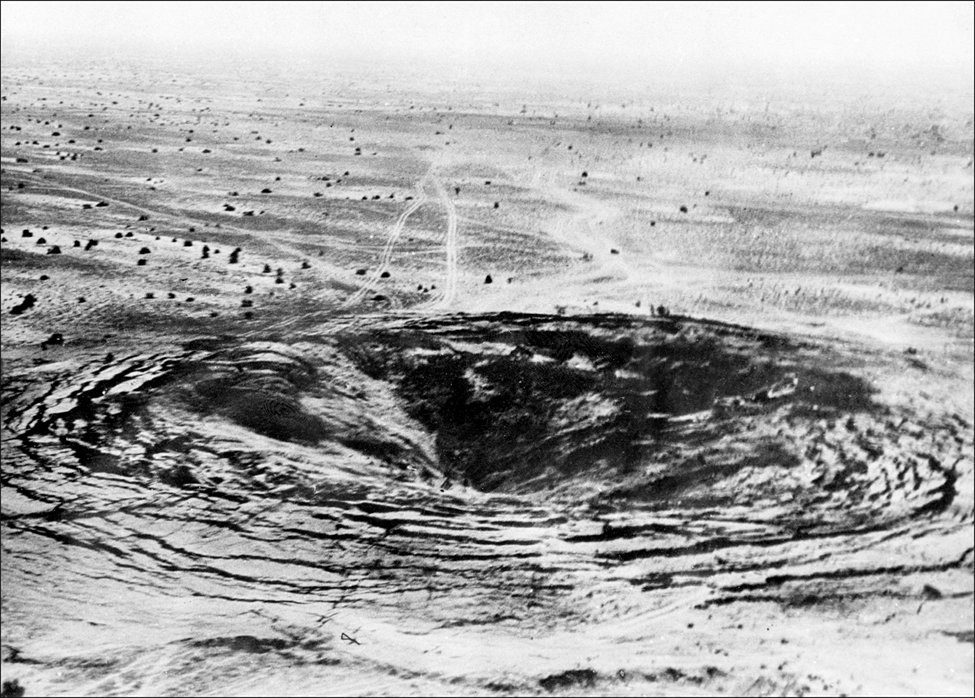
September 3, 1974: The IAEA publishes the “trigger list” developed by the Zangger Committee, identifying nuclear items that require IAEA safeguards as a condition of export.
May 30, 1975: The 91 states-parties to the NPT hold the treaty’s first review conference. The treaty members decide to hold such conferences to review the implementation of the treaty every five years.
January 11, 1978: States participating in the voluntary Nuclear Suppliers Group provide the IAEA with a common set of guidelines they will follow in making nuclear exports. The IAEA publishes the guidelines the next month. For more information, see The Nuclear Suppliers Group at a Glance.
1980s
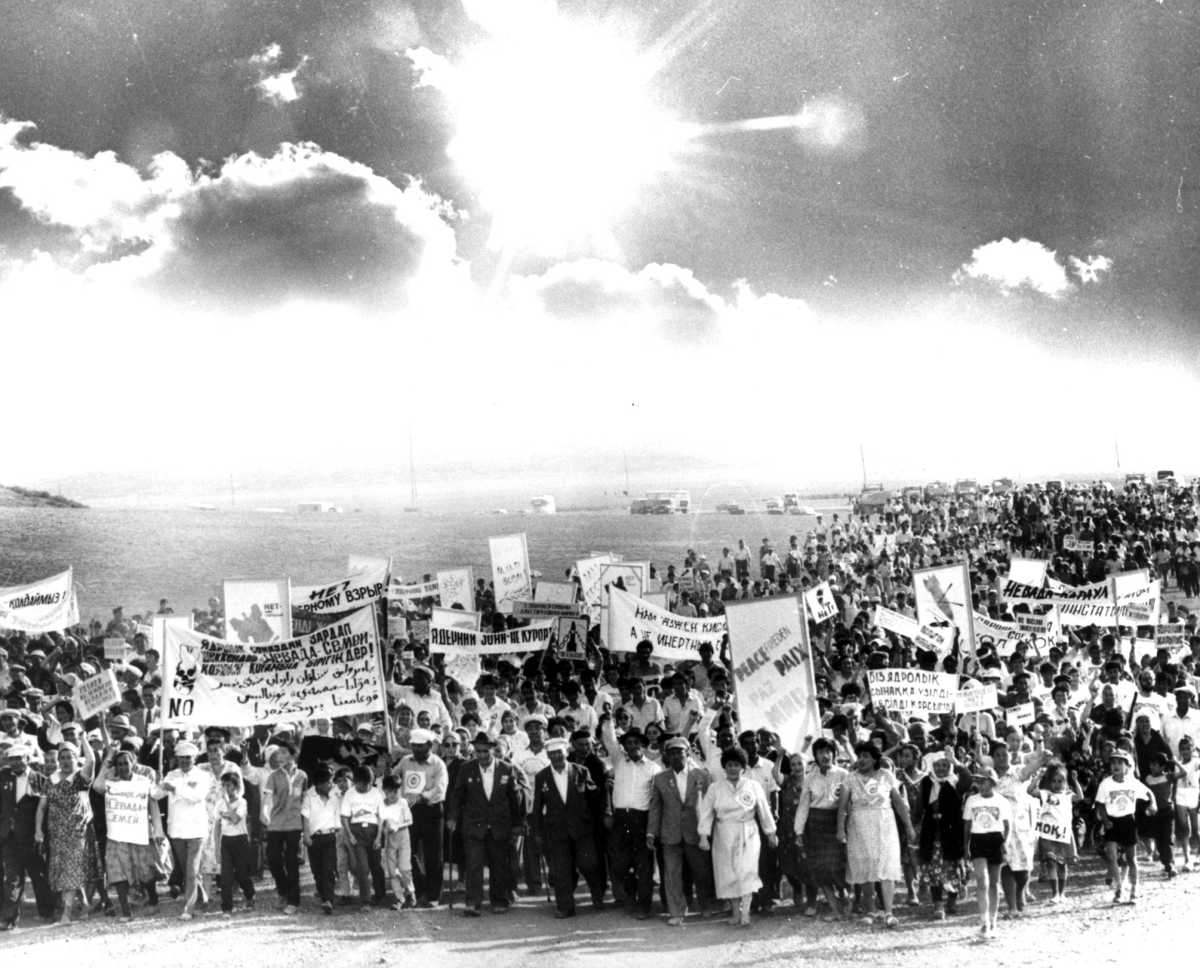 The decade was dominated by the Cold War superpower competition of the United States and the Soviet Union. Much of the world held its collective breath during the first years of the decade as tensions and the nuclear arms race heated up between the two rivals, leading to popular anti-nuclear protests worldwide and the nuclear freeze movement in the United States. The international community exhaled a bit in the second half of the decade as the United States and the Soviet Union earnestly sat down at the arms negotiating table and for the first time eliminated an entire category of nuclear weapons through the 1987 Intermediate-Range Nuclear Forces Treaty. The two countries also proceeded to negotiate cuts to their strategic nuclear forces, which ultimately would be realized in the landmark 1991 Strategic Arms Reduction Treaty.
The decade was dominated by the Cold War superpower competition of the United States and the Soviet Union. Much of the world held its collective breath during the first years of the decade as tensions and the nuclear arms race heated up between the two rivals, leading to popular anti-nuclear protests worldwide and the nuclear freeze movement in the United States. The international community exhaled a bit in the second half of the decade as the United States and the Soviet Union earnestly sat down at the arms negotiating table and for the first time eliminated an entire category of nuclear weapons through the 1987 Intermediate-Range Nuclear Forces Treaty. The two countries also proceeded to negotiate cuts to their strategic nuclear forces, which ultimately would be realized in the landmark 1991 Strategic Arms Reduction Treaty.
Although the U.S.-Soviet nuclear arms race was center stage, efforts to advance and constrain the nuclear weapons ambitions and programs of other countries played out in the wings, sometimes as part of the superpower drama. For instance, the United States pushed nonproliferation concerns aside when ignoring Pakistan’s nuclear weapons program because of that country’s role in fighting Soviet forces inside Afghanistan. Meanwhile, Iraq, North Korea, and South Africa advanced their nuclear weapons efforts in relative secrecy. In this decade, Iran began to secretly acquire uranium-enrichment-related technology from Pakistani suppliers. Taiwan’s covert nuclear weapons program, however, was squelched by U.S. pressure. Other nonproliferation gains included a joint declaration by Argentina and Brazil to pursue nuclear technology only for peaceful purposes, alleviating fears of a nuclear arms race between the two, and the conclusion of a nuclear-weapon-free zone in the South Pacific. Moreover, the NPT added 30 new states-parties during the decade, including North Korea.
September 7, 1980: The second NPT review conference adopts its final document.
September 25, 1985: The third NPT review conference adopts its final document.
1990s
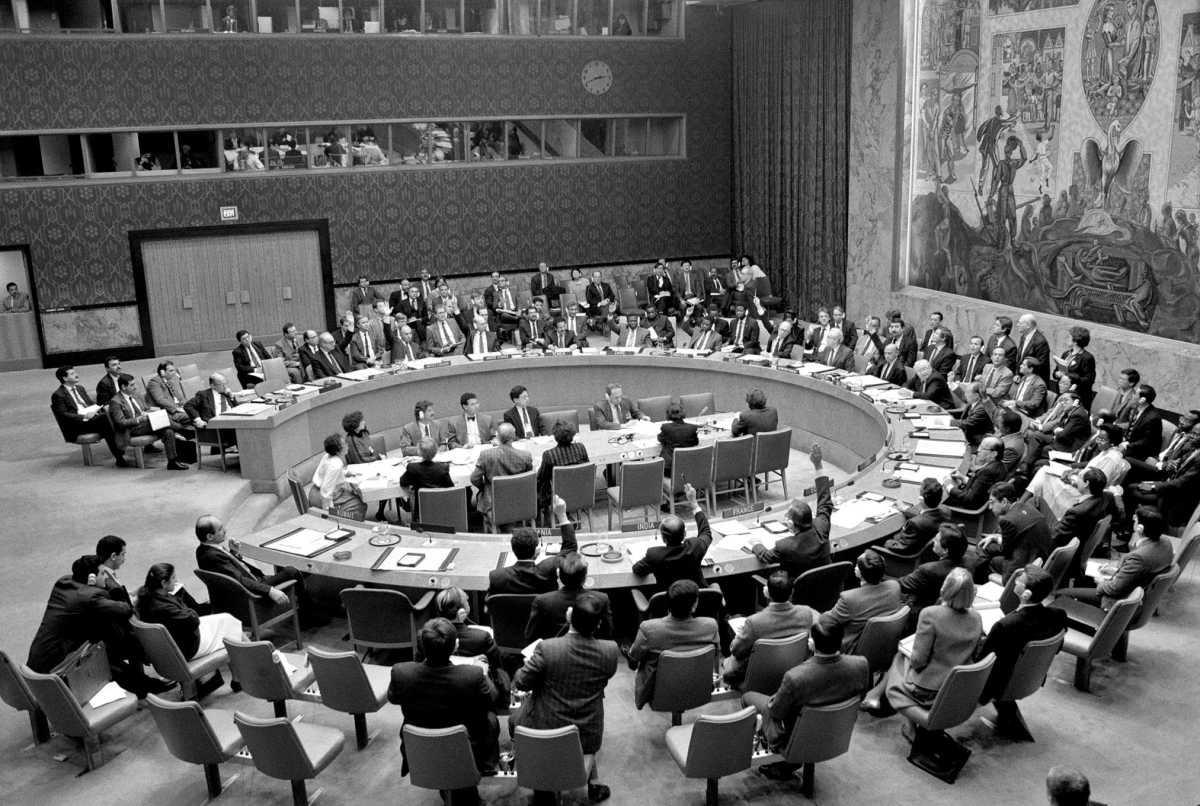
October 4, 1990: The fourth NPT review conference adopts its final document.
April 3, 1991: The UN Security Council adopts Resolution 687 requiring Iraq to eliminate its secret nuclear weapons program, which was revealed after the Iraqi defeat in the 1991 Persian Gulf War. Iraq had illegally pursued a nuclear weapons program despite being an NPT state party. Following the adoption of Resolution 687, the IAEA gained a greater understanding of Iraq’s clandestine program and dismantled and sealed its remnants. The realization that Iraq pursued such a program undetected in spite of agency inspections served as a key impetus to strengthen IAEA safeguards. That effort eventually produced the Model Additional Protocol. The IAEA maintained a presence in Iraq until its inspectors were forced to withdraw in late 1998 on the eve of U.S. and British military strikes against Iraq.
July 10, 1991: South Africa accedes to the NPT. Two years later, the South African government admits that it had covertly built six completed nuclear devices and then dismantled them before joining the accord. The move to get rid of the weapons was seen as preparation for the coming end of apartheid rule.
March 9, 1992: China accedes to the NPT.
May 23, 1992: Belarus, Kazakhstan, and Ukraine sign the Lisbon Protocol committing to join the NPT as non-nuclear-weapon states. All three had nuclear weapons when they were Soviet republics. On December 5, 1994, Ukraine becomes the last of the three to accede to the NPT. For more information, see The Lisbon Protocol at a Glance.
August 3, 1992: France, the last of the five recognized nuclear-weapon states, accedes to the NPT.
March 12, 1993: North Korea announces its intention to withdraw from the NPT, but it suspends that withdrawal on June 11, 1993.
April 1, 1993: The IAEA declares North Korea in noncompliance with its safeguards obligations and refers Pyongyang to the UN Security Council.
April 11, 1995: The UN Security Council adopts Resolution 984 acknowledging the unilateral pledges by the five nuclear-weapon states not to use or threaten to use nuclear weapons against non-nuclear-weapon states-parties to the NPT. The move is seen as a way to win greater support for the possible indefinite extension of the treaty.
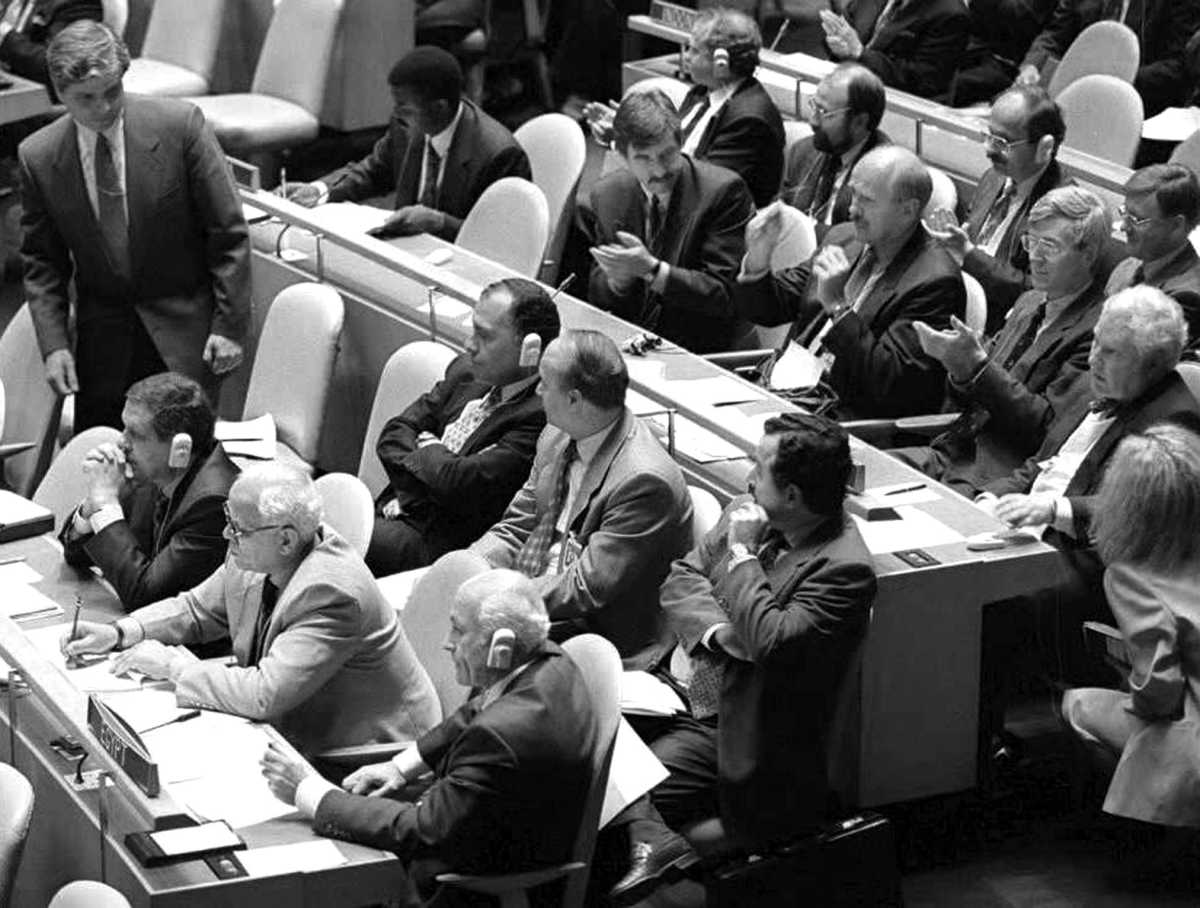 May 11, 1995: At the fifth NPT review conference, states-parties agree to the treaty’s indefinite extension. Article X of the NPT called for a conference of states parties to be held 25 years after the treaty’s entry into force in order to determine whether the treaty would remain in force indefinitely or for other additional periods of time. This conference was held in 1995 and began with considerable uncertainty regarding the nature of any extension. Non-nuclear-weapon states, particularly developing countries belonging to the Nonaligned Movement, expressed disappointment with the lack of progress toward nuclear disarmament and feared that a decision to extend the treaty indefinitely would by default enable the nuclear-armed states to hold on to their nuclear arsenals in perpetuity and avoid any accountability in eliminating them. At the conference, Indonesia and South Africa proposed tying the treaty’s indefinite extension to a decision to strengthen the treaty review process. They also linked it to the establishment of a set of principles and objectives on nuclear nonproliferation and disarmament to hold NPT states-parties, particularly the nuclear-weapon states, accountable to their commitments. These principles and objectives include the completion of the Comprehensive Test Ban Treaty and negotiations on the cutoff of fissile material production for weapons purposes. The conference also adopted a resolution calling for the establishment of a zone free of weapons of mass destruction in the Middle East. This resolution was intended to win support for the indefinite NPT extension from Arab states, which objected to Israel’s status outside the NPT and its assumed possession of nuclear weapons. Although only a majority of states-parties were required to approve the indefinite extension, the agreed package of decisions obtained enough support that such a vote was not required.
May 11, 1995: At the fifth NPT review conference, states-parties agree to the treaty’s indefinite extension. Article X of the NPT called for a conference of states parties to be held 25 years after the treaty’s entry into force in order to determine whether the treaty would remain in force indefinitely or for other additional periods of time. This conference was held in 1995 and began with considerable uncertainty regarding the nature of any extension. Non-nuclear-weapon states, particularly developing countries belonging to the Nonaligned Movement, expressed disappointment with the lack of progress toward nuclear disarmament and feared that a decision to extend the treaty indefinitely would by default enable the nuclear-armed states to hold on to their nuclear arsenals in perpetuity and avoid any accountability in eliminating them. At the conference, Indonesia and South Africa proposed tying the treaty’s indefinite extension to a decision to strengthen the treaty review process. They also linked it to the establishment of a set of principles and objectives on nuclear nonproliferation and disarmament to hold NPT states-parties, particularly the nuclear-weapon states, accountable to their commitments. These principles and objectives include the completion of the Comprehensive Test Ban Treaty and negotiations on the cutoff of fissile material production for weapons purposes. The conference also adopted a resolution calling for the establishment of a zone free of weapons of mass destruction in the Middle East. This resolution was intended to win support for the indefinite NPT extension from Arab states, which objected to Israel’s status outside the NPT and its assumed possession of nuclear weapons. Although only a majority of states-parties were required to approve the indefinite extension, the agreed package of decisions obtained enough support that such a vote was not required.
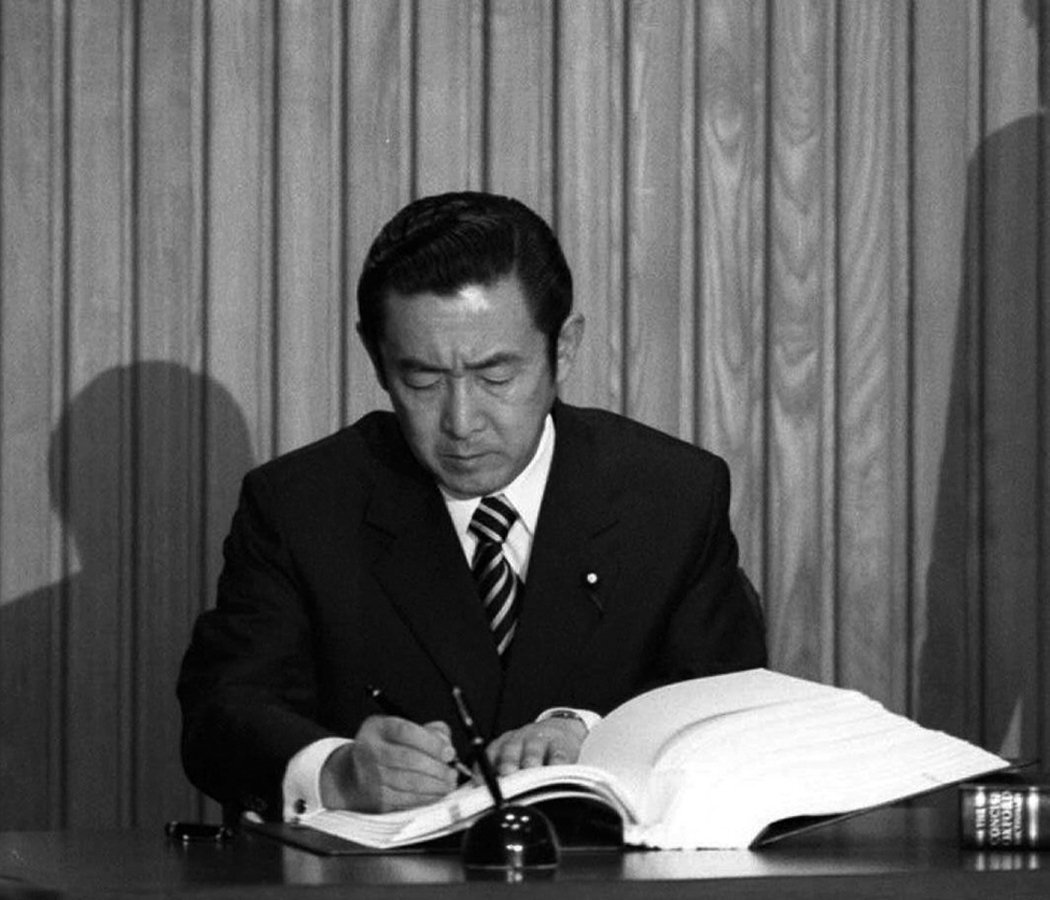 September 24, 1996: The Comprehensive Test Ban Treaty outlawing nuclear explosions is opened for signature. The treaty has yet to enter into force because not all of the requisite states—including China, India, Pakistan, and the United States—have ratified it. For more information, see The Comprehensive Test Ban Treaty at a Glance.
September 24, 1996: The Comprehensive Test Ban Treaty outlawing nuclear explosions is opened for signature. The treaty has yet to enter into force because not all of the requisite states—including China, India, Pakistan, and the United States—have ratified it. For more information, see The Comprehensive Test Ban Treaty at a Glance.
May 15, 1997: The IAEA adopts the Model Additional Protocol, a voluntary safeguards agreement for a state to give the agency greater powers to verify that illegal nuclear weapons-related activities are not taking place inside that state. The protocol was developed in response to Iraq’s and North Korea’s illicit actions under the treaty. For more information, see the 1997 Additional Protocol at a Glance.
May 22, 2000: The NPT states-parties agree to a final document at the sixth review conference that outlines the so-called 13 steps for progress toward nuclear disarmament, including an “unequivocal undertaking by the nuclear-weapon States to accomplish the total elimination of their nuclear arsenals.”
January 10, 2003: North Korea announces its withdrawal from the NPT. North Korea initially announced its intent to withdraw from the NPT a decade earlier following suspicions of NPT violations. After holding talks with the United States, North Korea suspended that withdrawal in June 1993, just a day before it would have come into effect. It further agreed to give up its nuclear weapons program under a 1994 agreement with the United States. Following the collapse of that agreement in 2002, North Korea declared January 10, 2003, that, with only one day remaining of its previous three-month notification requirement to withdraw from the NPT, its withdrawal would come into effect a day later. Although the legality of North Korea’s process of withdrawal remains in question, subsequent calls by the UN and the IAEA for Pyongyang to return to the NPT demonstrate a recognition that it is currently outside the treaty. Article X of the NPT recognizes the right of states to withdraw from the treaty if that party’s “supreme interests” are jeopardized by “extraordinary events.” States are required to give notice three months in advance before such a withdrawal would take effect. In light of North Korea’s withdrawal and subsequent development of nuclear weapons, the 2005 NPT review conference considered ways to ensure that states that withdraw from the treaty are not able to use technologies and materials obtained while an NPT state-party pursues nuclear weapons.
June 6, 2003: The IAEA issues a report detailing Iranian clandestine nuclear activities that Tehran failed to report to the agency, in violation of its safeguards agreement.
December 19, 2003: Libya announces that it will dismantle its WMD programs, including a secret nuclear weapons program, and agrees to IAEA inspections and adherence to an additional protocol.
May 2, 2005: The seventh NPT review conference opens at the United Nations in New York.
September 19, 2005: North Korea commits to abandoning its nuclear weapons and programs and returning to the NPT and to IAEA safeguards in an agreement following the six-party talks on North Korean denuclearization.
September 24, 2005: The IAEA finds Iran in noncompliance with its safeguards obligations after nearly two years of inspections into its undeclared nuclear activities. The agency in February 2006 refers Iran to the UN Security Council, which adopts three sanctions resolutions against Iran over the next two years. IAEA investigations continue into Iran’s past and current nuclear activities.
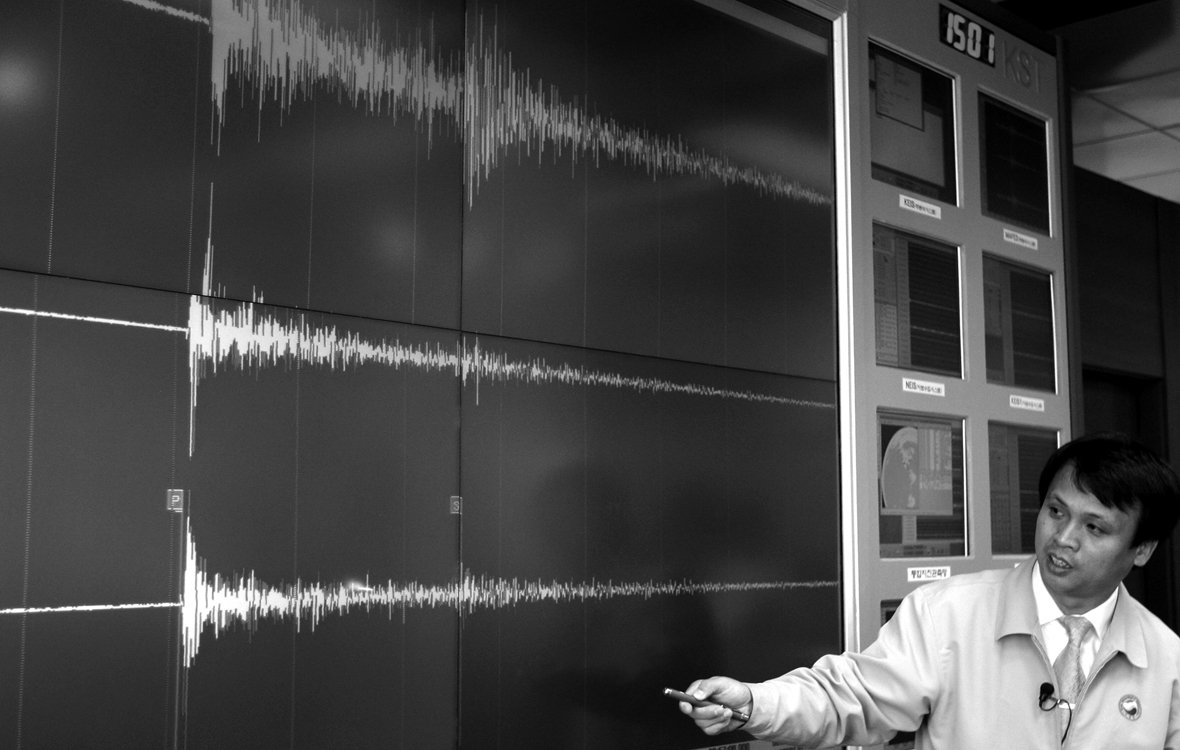
September 6, 2008: The Nuclear Suppliers Group agrees to permit trade in nuclear material and technology with India, despite that country’s status as a nonparty to the NPT and de facto nuclear-weapon state.
2010s
May 3-28, 2010: The eighth NPT review conference takes place. For more information, see the 2010 Nuclear Nonproliferation Treaty Review Conference fact sheet.
February 5, 2011: The New Strategic Arms Reduction Treaty (New START) enters into force. The United States and Russia agree to reduce strategic and offensive arms. The treaty’s central limits must be reached by February 5, 2018. New START reduces the number of deployed strategic nuclear warheads and bombs that each state can have to 1,550 each. For more information, see New START at a Glance.
June 2011: The United Kingdom announces voluntary planned reductions in its deployed nuclear forces set to be accomplished by early 2015. When complete, the United Kingdom will have no more than 120 deployed strategic warheads, with 60 warheads in reserve to support the maintenance and management of the operational force. All excess warheads will be dismantled by the mid-2020s.
November 23, 2012: The conveners (Russia, the United Kingdom, the United States, and the United Nations) of a conference to establish a weapons of mass destruction free zone in the Middle East announce that the conference will be postponed because not all states in the region agree on an agenda for the conference.
March 4-5, 2013: Norway hosts the first Conference on the Humanitarian Impact of Nuclear Weapons, with participation from 127 states. The conference focused on scientific findings on the impact of nuclear weapons use on humans, the environment, and the global climate. The five recognized nuclear-weapon states (China, France, Russia, the United Kingdom, and the United States) all decide not to attend.
February 13-14, 2013: A second conference on the Humanitarian Impact of Nuclear Weapons is held in Mexico, with 146 states in attendance. The conference called for greater efforts on disarmament and an initiative to reach new international standards and norms to prohibit the use of nuclear weapons. The nuclear-weapon states do not participate in the conference.
May 6, 2014: All five nuclear-weapon states sign the protocol for the Central Asian Nuclear-Weapons-Free-Zone (CANFWZ) treaty. The CANFWZ applies to Kazakhstan, Kyrgyzstan, Tajikistan, Turkmenistan, and Uzbekistan.
November 17, 2014: France ratifies the CANFWZ.
December 8-9, 2014: A third conference on the Humanitarian Impact of Nuclear Weapons is held in Vienna. The United States and the United Kingdom decide to attend, and China choses to send an observer. Over 150 countries and several international and civil society organizations participate. Over 60 countries sign a pledge to cooperate to “stigmatize, prohibit, and eliminate” nuclear weapons.
January 30, 2015: The United Kingdom ratifies the CANFWZ.
April 27 - May 22, 2015: The ninth review conference for the NPT is held at the United Nations in New York but ends May 22 without agreement on a final conference document. Key states parties could not bridge differences on the process for convening a conference on a WMD-free zone in the Middle East, as well as disagreements between the nuclear-weapon states and non-nuclear-weapons states over the pace of implementation of Article VI of the treaty and action steps agreed to at the 2010 conference. After nearly four weeks of sometimes acrimonious negotiations, the conference president, Ambassador Taous Ferroukhi of Algeria, presented a consolidated draft final document for adoption by consensus on the final day of the meeting. But the United States, the United Kingdom, and Canada announced in the final hours that they could not support the formula presented in the document for pursuing a conference to discuss the Middle East zone.
With the five nuclear-weapon states either unable or unwilling to make further disarmament commitments, a group of 107 states endorsed a statement, known as the “Humanitarian Pledge,” which calls on states "to identify and pursue effective measures to fill the legal gap for the prohibition and elimination of nuclear weapons."
July 14, 2015: Iran and the P5+1 (China, France, Germany, Russia, the United Kingdom, and the United States) conclude the Joint Comprehensive Plan of Action (JCPOA) to curtail Iran's sensitive nuclear fuel cycle activities under strengthened safeguards. For more information, see the Joint Comprehensive Plan of Action at a Glance.
October 27, 2016: UN General Assembly First Committee adopts a resolution for negotiating a conference on a treaty on the prohibition of nuclear weapons by a vote of 123-38 with 16 abstentions.
July 7, 2017: The second and final round of negotiations on the Treaty on the Prohibition of Nuclear Weapons concludes with states voting 122-1-1 to adopt the treaty.
September 20, 2017: The Treaty on the Prohibition of Nuclear Weapons is opened for signature. For more information, see the Treaty on the Prohibition of Nuclear Weapons at a Glance.
February 5, 2018: Central limits on strategic nuclear forces imposed by New START take effect. Both Russia and the United States meet the limits.
May 8, 2018: The United States announces its withdrawal from the JCPOA. The remaining signatories criticize the move and reiterate their support for the agreement. For more information, see the Timeline of Nuclear Diplomacy with Iran.
August 2, 2019: The United States withdraws from the 1987 Intermediate-Range Nuclear Forces Treaty.
March 2020: The global coronavirus (COVID-19) pandemic forces a postponement of the 10th review conference of the nuclear Nonproliferation Treaty (NPT), until January 4-28, 2022. The conference was originally scheduled to be held at UN headquarters in New York City from April 27 until May 22.
January 2021: The Treaty on the Prohibition of Nuclear Weapons enters into force. Supporters of the TPNW, which include some of the strongest backers of the NPT, note that the new treaty complements the NPT and is a good-faith contribution to their Article VI disarmament commitments. The NPT nuclear-weapon states unsurprisingly oppose the TPNW, which calls into question their continued reliance on the threat of using weapons of mass destruction in the name of their national security interests.
February 3, 2021: The United States and Russia agreed to extend New START by five years, as allowed by the treaty text, until Feb. 5, 2026.
February 2022: President Vladimir Putin's decision to invade Ukraine leads to a suspension of U.S.-Russian strategic stability dialogue and efforts to negotiate a follow-on agreement to supersede New START before its expiration.
June 21-23: At the first meeting of state parties to the TPNW in Vienna, delegations underscore that the TPNW compliments the NPT and issue detailed working papers on the subject.
August 1-26, 2022: The tenth review conference for the NPT, postponed by two years due to the COVID-19 pandemic, is held at the United Nations in New York. After four weeks of contentious negotiations and debate, amid the backdrop of Russia’s invasion of Ukraine, the conference president, Ambassador Gustavo Zlauvinen of Argentina, presented a consolidated 35-page draft final document for adoption by consensus on the final day of the meeting. Many states expressed disappointment about the lack of ambition in the forward-looking section of the draft but were not prepared to block its adoption. However, Russia did block consensus due to wording regarding nuclear safety at the Zaporizhzhya Nuclear Power Plant in Ukraine, which Russia has occupied since March 2022.
The draft text included a commitment to talks on a framework agreement to supersede the New START agreement between Russia and the United States, indicating the two parties “commit to the full implementation of the New START Treaty and to pursue negotiations in good faith on a successor framework to New START before its expiration in 2026, in order to achieve deeper, irreversible, and verifiable reductions in their nuclear arsenals.”
